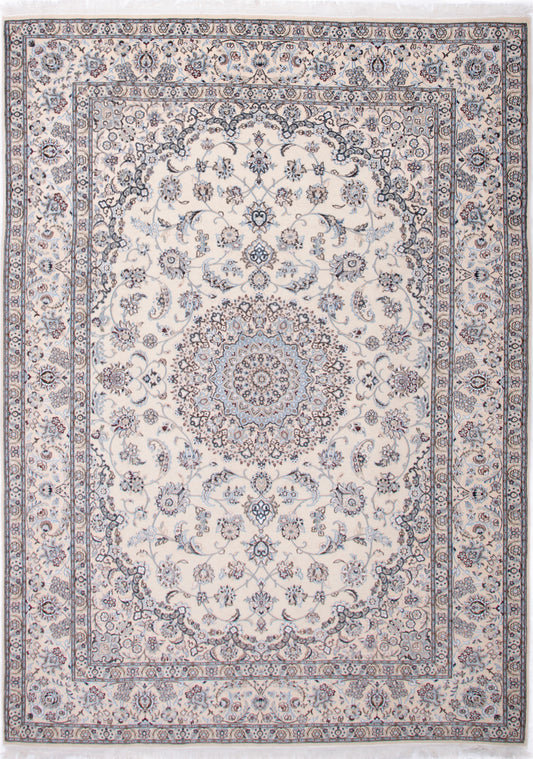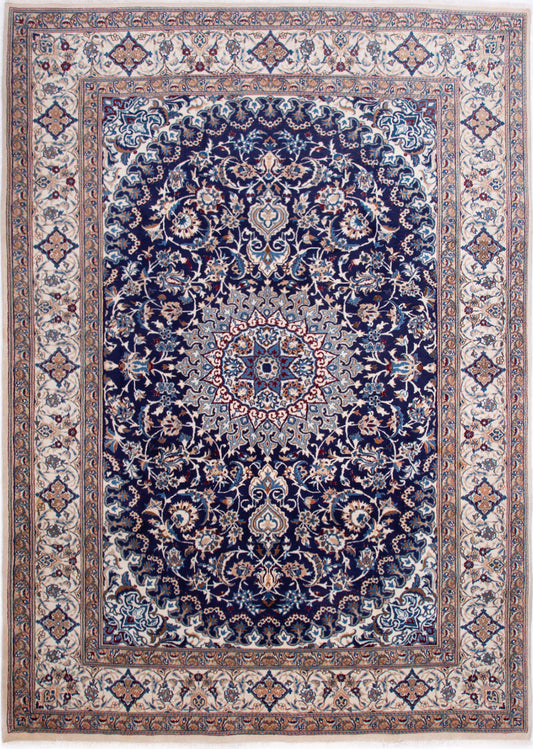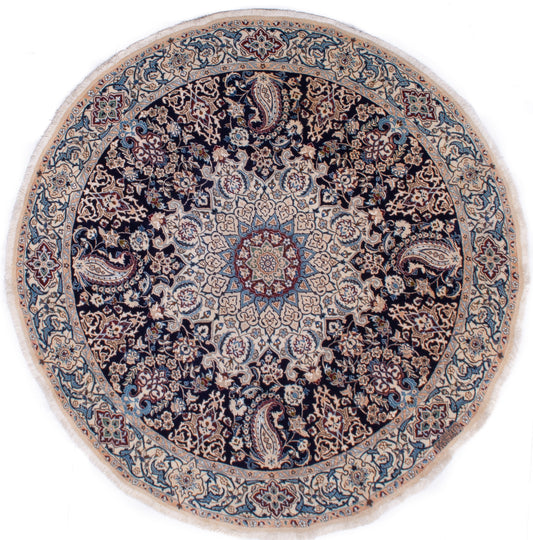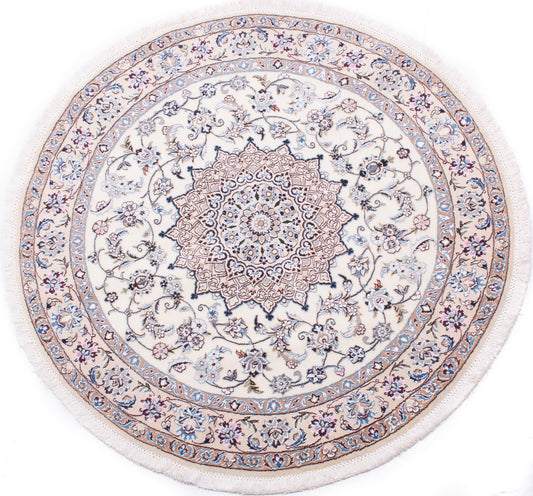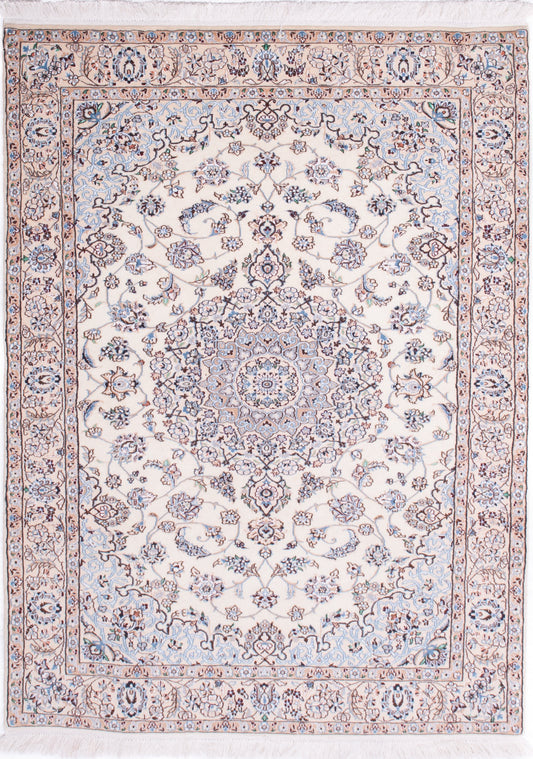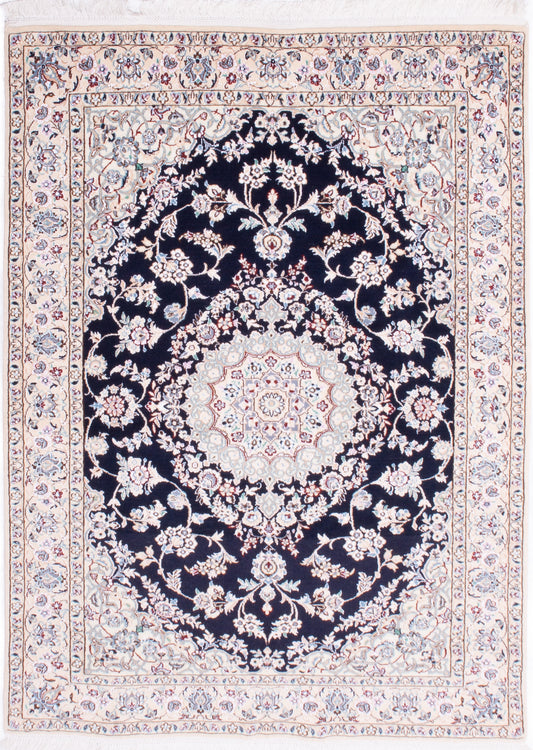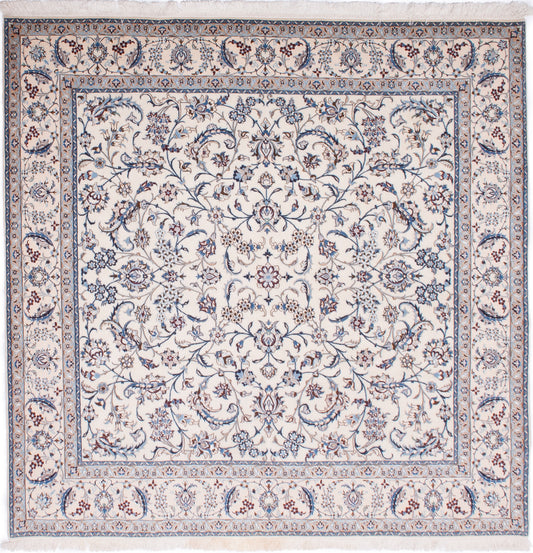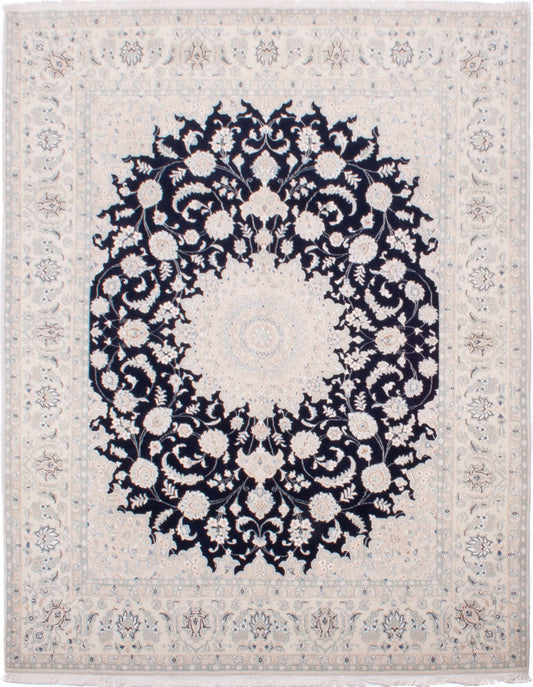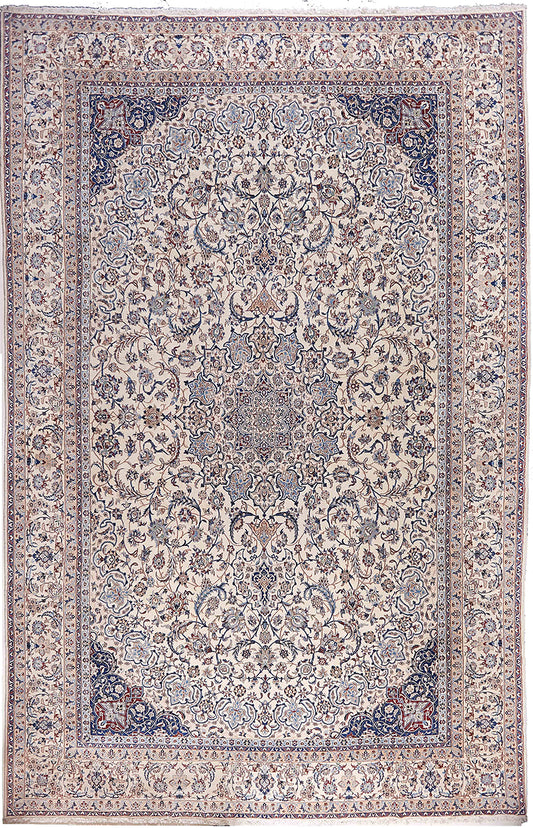Nain Rug History & Origin Guide
Nestled in the central region of Iran lies Nain, a town celebrated for its magnificent handmade rugs. Renowned for their elegance and intricate designs, Nain rugs have captivated collectors and enthusiasts for generations. Join us as we delve into the fascinating heritage, artistry, and distinctive qualities of these mesmerising creations.
Don't forget to explore our carefully curated collection of Nain rugs for sale.
The Rich History of Nain and Rug Weaving
Although the town of Nain has a long and storied history, rug weaving in the area is a relatively recent development, with the craft emerging in the early 20th century. Despite their shorter history, Nain rugs have garnered a reputation for their exquisite craftsmanship and fine materials, making them highly sought-after worldwide.
Distinctive Features of Nain Rugs
Nain rugs are renowned for their intricate patterns, often showcasing floral motifs and central medallions inspired by the town's rich cultural heritage. Nain rugs are typically woven using a delicate colour palette, with shades of ivory, blue, and beige featuring prominently. These rugs are characterised by their high knot density, which can range from 300 to 700 knots per square inch, making them incredibly luxurious and detailed.
Materials and Weaving Techniques
The finest Nain rugs are crafted using high-quality materials, such as silk and kork wool. This fine wool, sourced from the neck and underbelly of sheep, has a soft and lustrous texture. The weavers of Nain employ the Persian (asymmetrical) knotting technique to create their intricate designs, resulting in rugs that are not only visually stunning but also remarkably durable.
Understanding Nain Rug Categories: "La"
Nain rugs are often categorised based on their level of intricacy and quality, using the terms "La". This classification system is unique to Nain rugs and is determined by the number of threads that make up the foundation of the rug.

The term "La" is derived from the Farsi word for "layer." In the context of Nain rugs, a lower "La" number represents a higher-quality rug with a greater knot density and level of detail. The most common classifications found in Nain rugs are 9La, 6La and 4La. It is essential to understand that this classification does not solely determine the rug's value or quality, as factors such as materials, craftsmanship, and condition also contribute to its overall desirability.
Here's a brief overview of the different "La" categories:
- 9La: Nain rugs could never really be described as "commercial" as even the more entry level of rugs from Nain are fine and intricate when compared to many other towns and cities around Iran and beyond known for rug production. Rugs in the 9La group typically have a knot density ranging from 200 to 300 knots per square inch. They offer the beauty of Nain design and craftmanship at a more affordable price point.
- 6La:This category is the most common among Nain rugs. Rugs in the 6La group typically have a knot density ranging from 300 to 500 knots per square inch. They are admired for their intricate designs and fine craftsmanship, making them an excellent choice for collectors and enthusiasts.
- 4La: 4La Nain rugs are relatively rare and boast an even higher knot density, ranging from 500 to 700 knots per square inch. These rugs are exceptionally detailed and crafted from the finest materials, such as Kork wool and silk. Due to their rarity and exceptional quality, 4La Nain rugs are highly sought after by collectors and connoisseurs.
When selecting a Nain rug, consider the "La" classification alongside other factors, such as the rug's design, materials, and overall appeal, to ensure you find the perfect addition to your living space.
Exploring Nain and Its Attractions
Visitors to Nain can immerse themselves in the town's cultural history and witness its remarkable architectural landmarks. Among the most notable attractions in Nain are:
- Jameh Mosque of Nain: A stunning example of Iranian architecture, with a history spanning over a thousand years.
- Pirnia Traditional House and Ethnology Museum: A beautifully preserved traditional house that offers a glimpse into the region's past.
In addition to its historical sites, Nain is home to numerous skilled artisans who continue to produce exquisite rugs. A visit to the town's bustling bazaars provides the perfect opportunity to observe local weavers at work and perhaps acquire an authentic Nain rug as a treasured memento.
Best Time to Visit
The optimal time to visit Nain is during spring (April to June) and autumn (September to November), when the weather is mild and pleasant. These seasons are ideal for exploring the town's cultural sites and experiencing its vibrant atmosphere.
Climate and Weather in Nain
Nain experiences a semi-arid climate, characterised by hot summers and cold winters. During the summer months (June to August), temperatures can reach up to 35°C (95°F), while in winter (December to February), they can drop to below freezing. The town receives little rainfall throughout the year, with the majority of precipitation occurring in the spring and autumn months.
Due to the extreme temperature fluctuations, visitors are advised to pack appropriate clothing for the season. Lightweight attire is suitable for the hot summer months, while warm layers, including coats and scarves, are essential for the colder winter months.
Discover Your Perfect Rug
Are you ready to bring a piece of Nain's rich history and artistry into your home? Browse our exclusive collection of handcrafted Nain rugs and find the perfect addition to your living space. Immerse yourself in the elegance and exceptional craftsmanship of these beautiful rugs, and experience their timeless charm for yourself today!
Browse Our Current Selection of Nain Rugs
-
Persian Nain Rug
Regular price £2,525.00Regular priceUnit price / per -
 Sale
SalePersian Nain Rug
Regular price £985.00Regular priceUnit price / per£1,275.00Sale price £985.00Sale -
 Sale
SalePersian Nain Rug
Regular price £1,005.00Regular priceUnit price / per£1,115.00Sale price £1,005.00Sale -
Persian Nain Rug
Regular price £4,995.00Regular priceUnit price / per -
Persian Nain Rug
Regular price £2,545.00Regular priceUnit price / per -
Persian Nain Round Rug
Regular price £2,545.00Regular priceUnit price / per -
Persian Nain Round Rug
Regular price £1,675.00Regular priceUnit price / per -
Persian Nain Rug
Regular price £1,805.00Regular priceUnit price / per -
Persian Nain Rug
Regular price £1,695.00Regular priceUnit price / per -
Persian 6La Nain Square Rug
Regular price £5,095.00Regular priceUnit price / per -
Persian Nain Rug
Regular price £3,715.00Regular priceUnit price / per -
Persian Nain Rug
Regular price £14,795.00Regular priceUnit price / per




